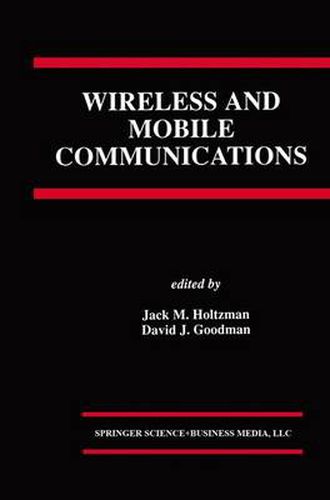Readings Newsletter
Become a Readings Member to make your shopping experience even easier.
Sign in or sign up for free!
You’re not far away from qualifying for FREE standard shipping within Australia
You’ve qualified for FREE standard shipping within Australia
The cart is loading…






This title is printed to order. This book may have been self-published. If so, we cannot guarantee the quality of the content. In the main most books will have gone through the editing process however some may not. We therefore suggest that you be aware of this before ordering this book. If in doubt check either the author or publisher’s details as we are unable to accept any returns unless they are faulty. Please contact us if you have any questions.
In October 1993, the Rutgers University Wireless Infonnation Network Laboratory hosted the fourth WINLAB Workshop on Third Generation Wireless Infonnation Networks. These events bring together a select group of experts interested in the long tenn future of Personal Communications, Mobile Computing, and other services supported by wireless telecommunications technology. This is a fast moving field and we already see, in present practice, realizations of visions articulated in the earlier Workshops. In particular, the second generation systems that absorbed the attention of the first WINLAB Workshop, are now commercial products. It is an interesting reflection on the state of knowledge of wireless communications that the debates about the relative technical merits of these systems have not yet been resolved. Meanwhile, in the light of United States Government announcements in September 1993 the business and technical communities must confront this year a new generation of Personal Communications Services. Here we have applications in search of the best technologies rather than the reverse. This is a rare situation in the infonnation business. Today’s advanced planning and forward looking studies will prevent technology shortages and uncertainties at the end of this decade. By then, market size and public expectations will surpass the capabilities of the systems of the mid-1990’s. Third Generation Wireless Infonnation Networks will place greater burdens on technology than their predecessors by offering a wider range of services and a higher degree of service integration.
$9.00 standard shipping within Australia
FREE standard shipping within Australia for orders over $100.00
Express & International shipping calculated at checkout
This title is printed to order. This book may have been self-published. If so, we cannot guarantee the quality of the content. In the main most books will have gone through the editing process however some may not. We therefore suggest that you be aware of this before ordering this book. If in doubt check either the author or publisher’s details as we are unable to accept any returns unless they are faulty. Please contact us if you have any questions.
In October 1993, the Rutgers University Wireless Infonnation Network Laboratory hosted the fourth WINLAB Workshop on Third Generation Wireless Infonnation Networks. These events bring together a select group of experts interested in the long tenn future of Personal Communications, Mobile Computing, and other services supported by wireless telecommunications technology. This is a fast moving field and we already see, in present practice, realizations of visions articulated in the earlier Workshops. In particular, the second generation systems that absorbed the attention of the first WINLAB Workshop, are now commercial products. It is an interesting reflection on the state of knowledge of wireless communications that the debates about the relative technical merits of these systems have not yet been resolved. Meanwhile, in the light of United States Government announcements in September 1993 the business and technical communities must confront this year a new generation of Personal Communications Services. Here we have applications in search of the best technologies rather than the reverse. This is a rare situation in the infonnation business. Today’s advanced planning and forward looking studies will prevent technology shortages and uncertainties at the end of this decade. By then, market size and public expectations will surpass the capabilities of the systems of the mid-1990’s. Third Generation Wireless Infonnation Networks will place greater burdens on technology than their predecessors by offering a wider range of services and a higher degree of service integration.